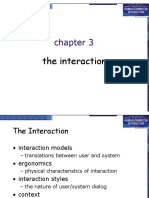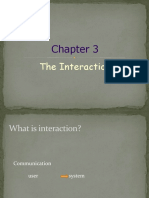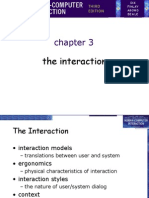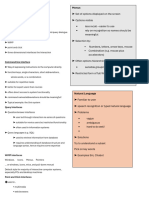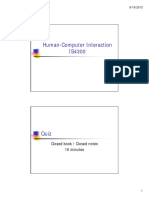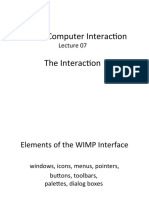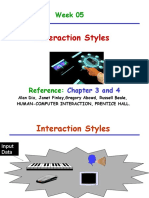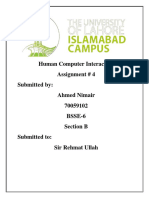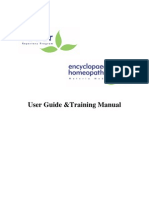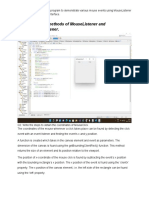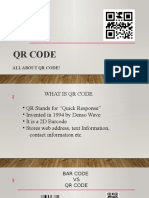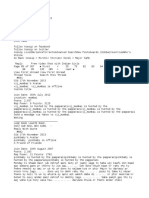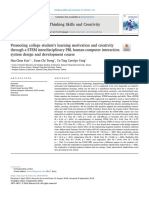0% found this document useful (0 votes)
81 views39 pagesThe Interaction: Notion of Interaction Interaction Frameworks Ergonomics Interaction Styles Context of Interaction
The document discusses various aspects of human-computer interaction including interaction frameworks, ergonomics, interaction styles, and context of interaction. It summarizes Norman's interaction framework which models the stages of interaction from goal establishment to evaluation. It also discusses interaction frameworks by Abowd and Beale which model the translation between the languages of the user, system, input, and output. Common interaction styles like command lines, menus, queries are described. The document also covers ergonomic principles, and discusses the social and organizational context of interaction.
Uploaded by
REYCART C. CALLECopyright
© © All Rights Reserved
We take content rights seriously. If you suspect this is your content, claim it here.
Available Formats
Download as PDF, TXT or read online on Scribd
0% found this document useful (0 votes)
81 views39 pagesThe Interaction: Notion of Interaction Interaction Frameworks Ergonomics Interaction Styles Context of Interaction
The document discusses various aspects of human-computer interaction including interaction frameworks, ergonomics, interaction styles, and context of interaction. It summarizes Norman's interaction framework which models the stages of interaction from goal establishment to evaluation. It also discusses interaction frameworks by Abowd and Beale which model the translation between the languages of the user, system, input, and output. Common interaction styles like command lines, menus, queries are described. The document also covers ergonomic principles, and discusses the social and organizational context of interaction.
Uploaded by
REYCART C. CALLECopyright
© © All Rights Reserved
We take content rights seriously. If you suspect this is your content, claim it here.
Available Formats
Download as PDF, TXT or read online on Scribd
/ 39



